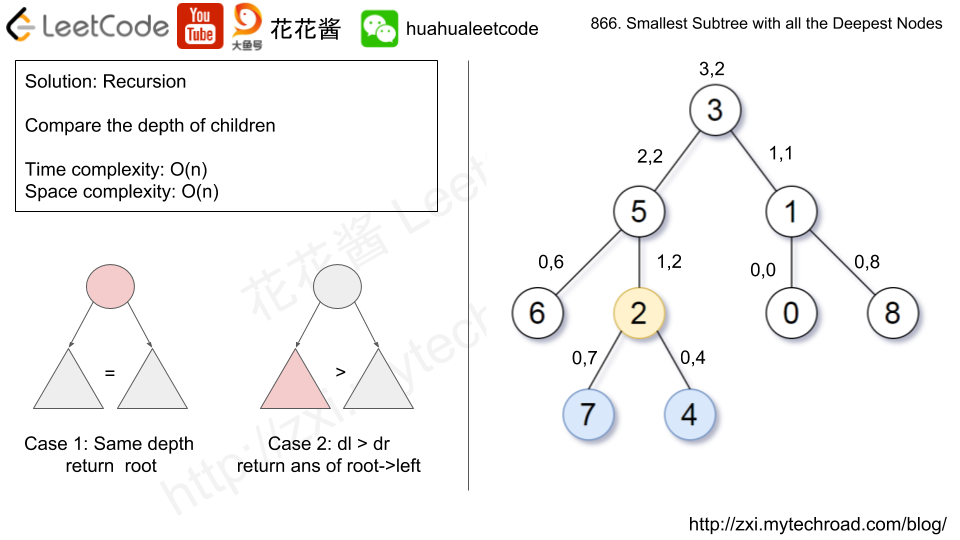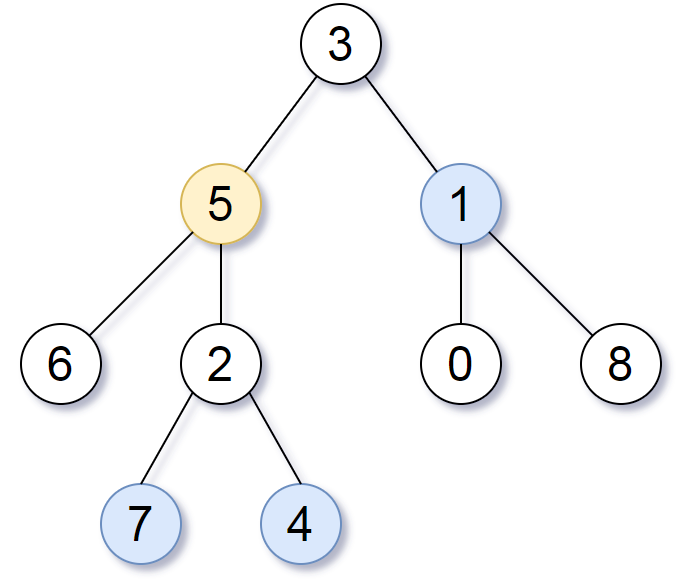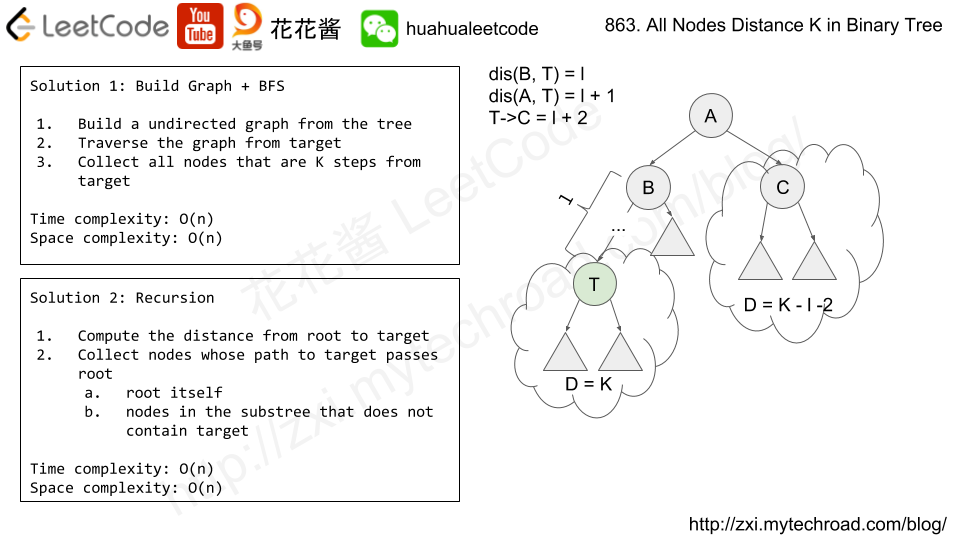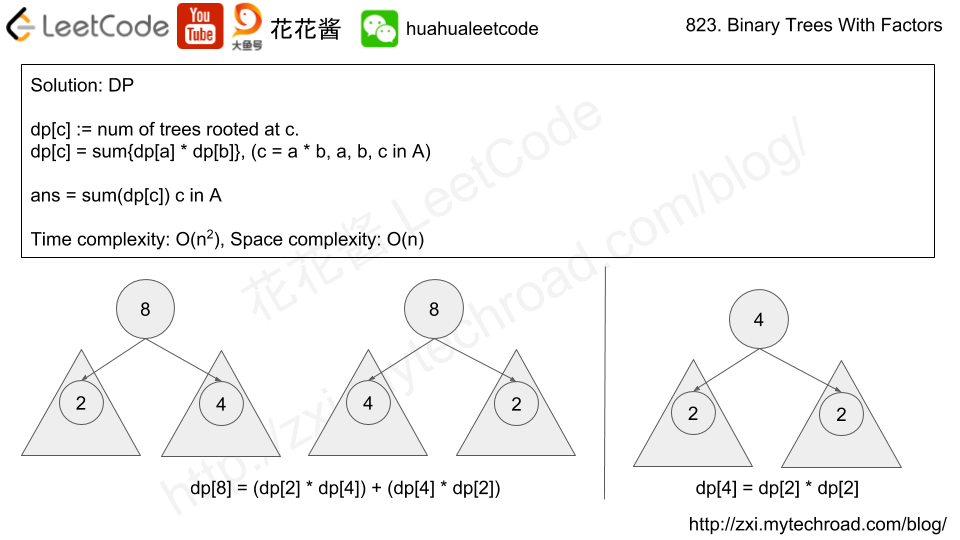Problem
Given the root node of a binary search tree (BST) and a value to be inserted into the tree, insert the value into the BST. Return the root node of the BST after the insertion. It is guaranteed that the new value does not exist in the original BST.
Note that there may exist multiple valid ways for the insertion, as long as the tree remains a BST after insertion. You can return any of them.
For example,
|
1 2 3 4 5 6 7 |
Given the tree: 4 / \ 2 7 / \ 1 3 And the value to insert: 5 |
You can return this binary search tree:
|
1 2 3 4 5 |
4 / \ 2 7 / \ / 1 3 5 |
This tree is also valid:
|
1 2 3 4 5 6 7 |
5 / \ 2 7 / \ 1 3 \ 4 |
Solution: Recursion
Time complexity: O(logn ~ n)
Space complexity: O(logn ~ n)
|
1 2 3 4 5 6 7 8 9 10 11 12 13 |
// Author: Huahua // Running time: 52 ms class Solution { public: TreeNode* insertIntoBST(TreeNode* root, int val) { if (root == nullptr) return new TreeNode(val); if (val > root->val) root->right = insertIntoBST(root->right, val); else root->left = insertIntoBST(root->left, val); return root; } }; |
 We return the node with value 2, colored in yellow in the diagram.
The nodes colored in blue are the deepest nodes of the tree.
The input "[3, 5, 1, 6, 2, 0, 8, null, null, 7, 4]" is a serialization of the given tree.
The output "[2, 7, 4]" is a serialization of the subtree rooted at the node with value 2.
Both the input and output have TreeNode type.
We return the node with value 2, colored in yellow in the diagram.
The nodes colored in blue are the deepest nodes of the tree.
The input "[3, 5, 1, 6, 2, 0, 8, null, null, 7, 4]" is a serialization of the given tree.
The output "[2, 7, 4]" is a serialization of the subtree rooted at the node with value 2.
Both the input and output have TreeNode type.

 Note that the inputs "root" and "target" are actually TreeNodes.
The descriptions of the inputs above are just serializations of these objects.
Note that the inputs "root" and "target" are actually TreeNodes.
The descriptions of the inputs above are just serializations of these objects.

